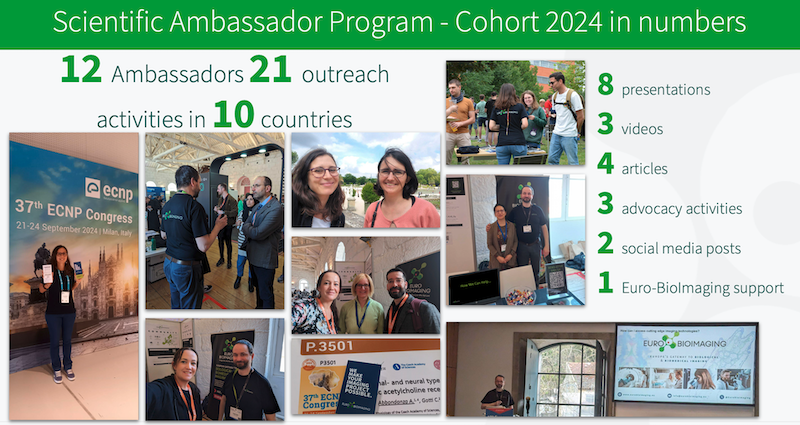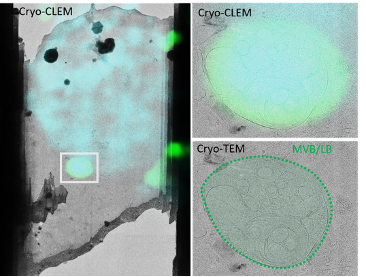
Correlated Imaging Series: Cryo-CLEM strategies for cryo-FIB milled adherent cells
On Friday August 20th at 13:00 CEST, Petr Chlanda of Heidelberg University/Bioquant delivers a lecture on Cryo-CLEM strategies as part of the Correlated Imaging Series, a new online lecture series brought to you by COMULIS and Euro-BioImaging.
In cellulo cryo-electron tomography facilitates understanding of cellular processes at molecular resolution and near to native conditions. Since labelling strategies of vitrified samples are limited, cryo-correlative light and electron microscopy (cryo-CLEM) is particularly important in localizing structures of interest within the cell. Cryo-light microscopy (cryo-LM) provides 3D fluorescence data of cells with resolution typically limited by low-numerical aperture air objectives that operate at long working distances from the samples. To apply cryo-transmission electron microscopy (cryo-TEM) on cellular samples, cryo-focused ion beam (cryo-FIB) milling is applied to carve a thin lamella (100-250 nm) that represents only a small fraction of the cell body volume. Different strategies allowing to correlate cryo-LM data with structures present within a cryo-lamella such as on-site targeted milling, post-TEM correlation, on-lamella cryo-LM have been developed. Petr Chlanda’s presentation will cover the general principles of cryo-CLEM approaches applied on cryo-FIB milled samples, a discussion on the challenges and advantages of different strategies, and cryo-CLEM examples on cryo-FIB milled influenza A virus infected cells will be shown.
Want to learn more? Everyone is free to join, no registration required: https://us02web.zoom.us/j/760003029
Learn more about the Correlated Imaging Series: https://www.eurobioimaging.eu/news/introducing-the-correlative-imaging-series-from-comulis-and-euro-bioimaging/

Image courtesy of Petr Chlanda
About Petr Chlanda
Petr studied biochemistry at Charles University in Prague. He then did his PhD on assembly of vaccinia virus in the laboratory of Jacomine Krijnse-Locker at EMBL Heidelberg and Heidelberg University where he was introduced to a variety of electron microscopy techniques. After that, he joined the laboratory of John Briggs where he studied influenza A virus assembly by cryo-electron tomography. In 2011 he did a post-doc in a laboratory of Joshua Zimmerberg at the NIH, Bethesda where he used cryo-electron tomography and biophysical approaches to study influenza A virus membrane fusion. Since 2017 Petr is a group leader at Heidelberg University Hospital where he obtained Chica and Heinz Schaller funding to establish his research on membrane biology of viral infection. His group uses advanced electron microscopy techniques to study virus-membrane interactions inside the cells at a molecular resolution.

More news from Euro-BioImaging


